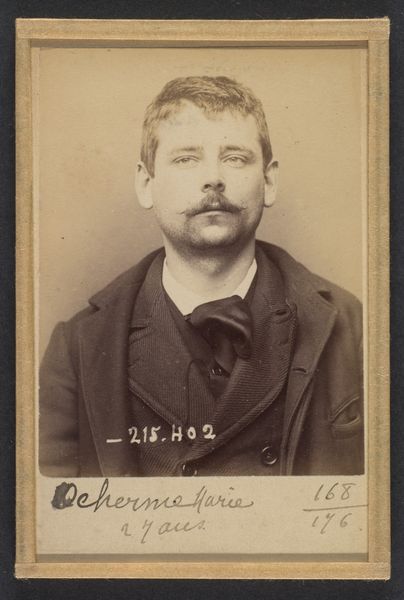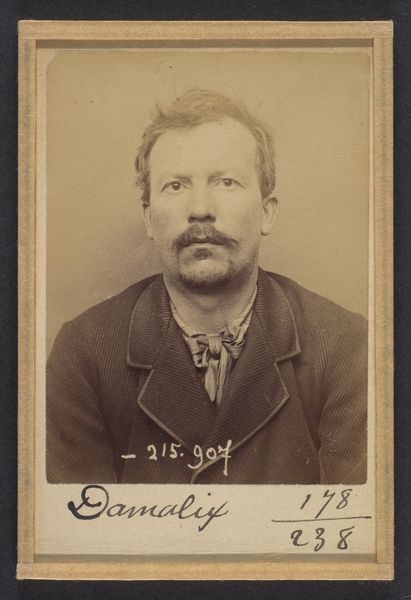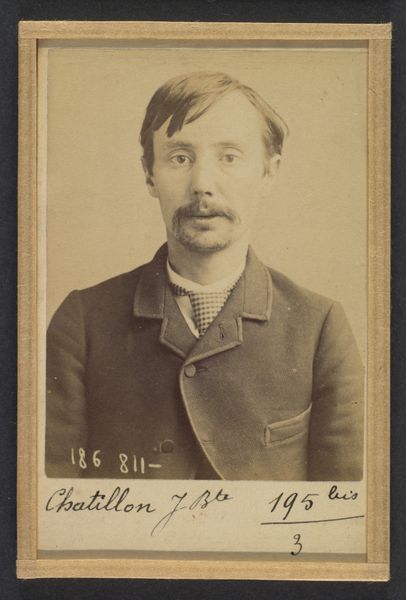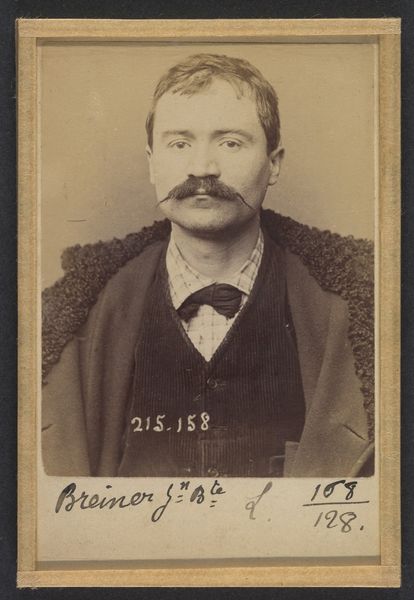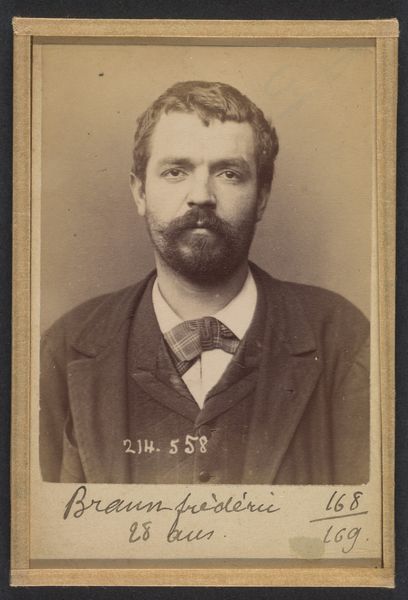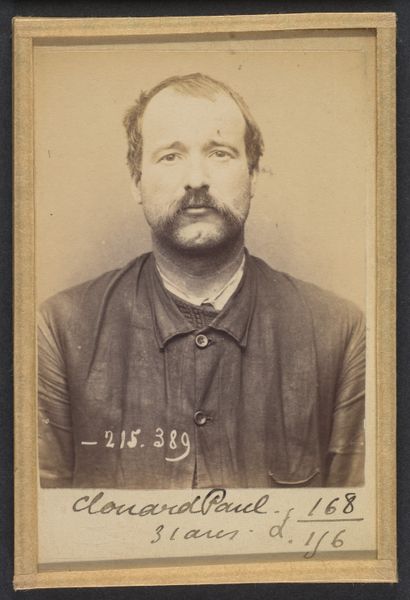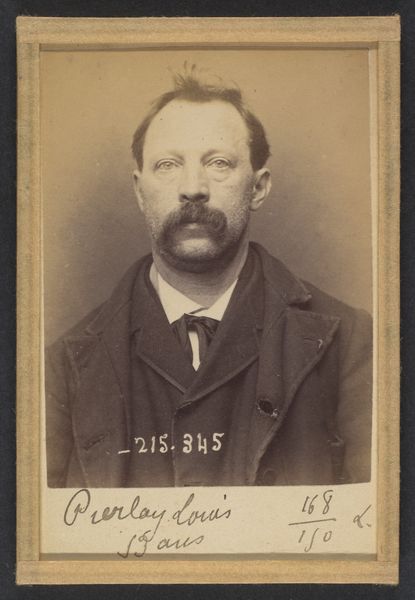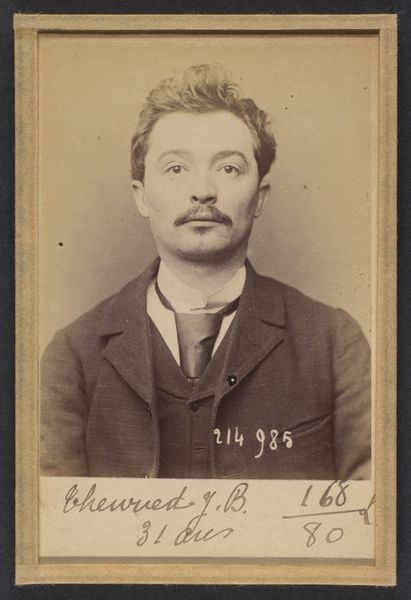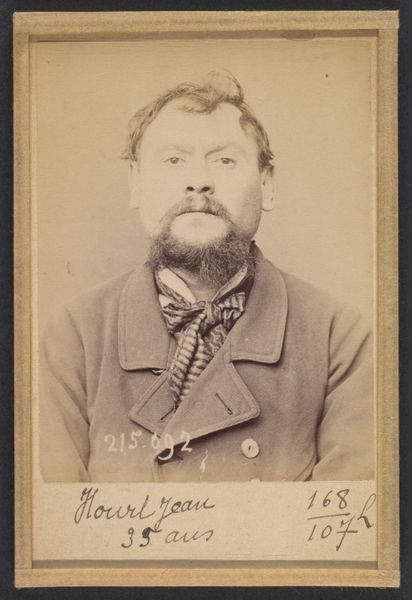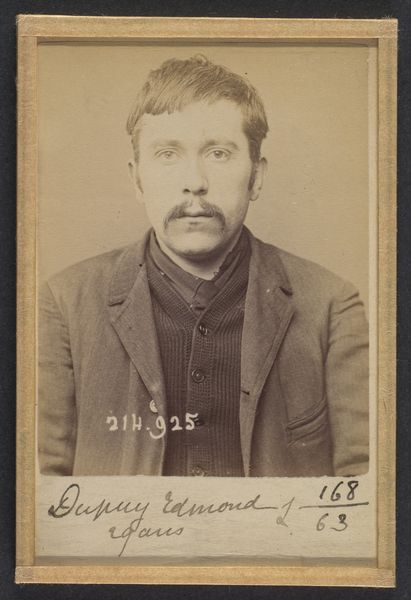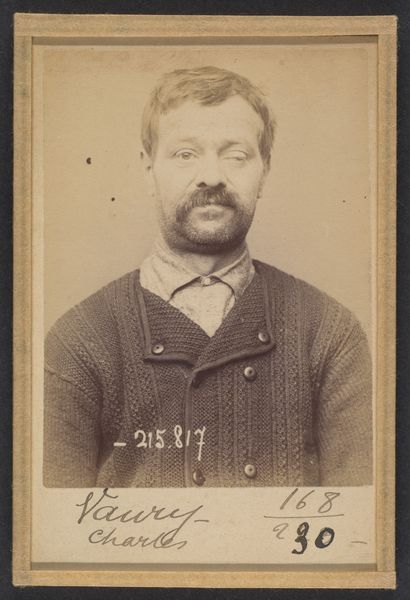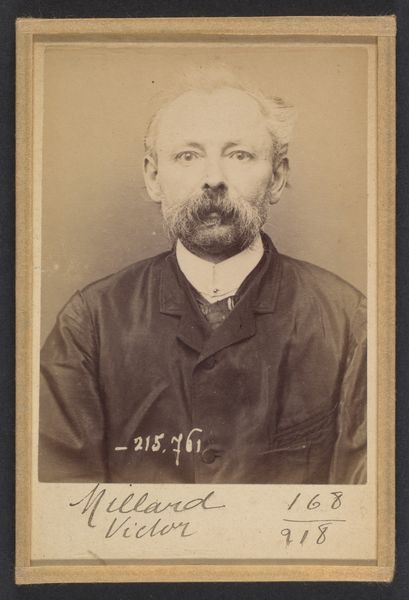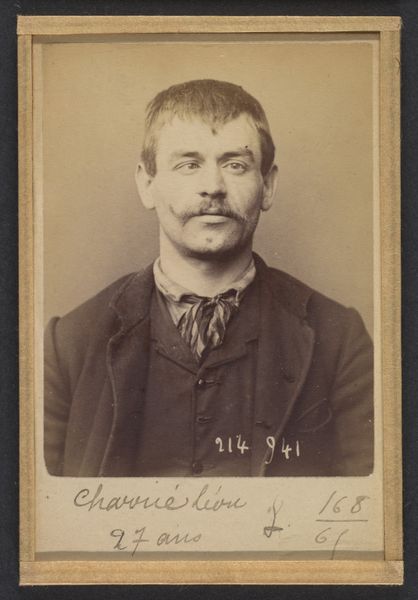
Thiebaut. Eugène. 35 (ou 36) ans, né à Château-Salin (Menthe & Moselle). Couvreur. Anarchiste. 3/3/94 1894
0:00
0:00
photography, gelatin-silver-print
#
portrait
#
portrait
#
street-photography
#
photography
#
gelatin-silver-print
#
history-painting
#
realism
Dimensions: 10.5 x 7 x 0.5 cm (4 1/8 x 2 3/4 x 3/16 in.) each
Copyright: Public Domain
Editor: Here we have Alphonse Bertillon's gelatin-silver print, "Thiebaut. Eugène. 35 (ou 36) ans, né à Château-Salin (Menthe & Moselle). Couvreur. Anarchiste. 3/3/94" made in 1894. It feels very…clinical, almost detached. It lacks any sense of artistic flair. What's your take? Curator: The clinical aesthetic *is* the point. Bertillon pioneered forensic photography. He’s using the medium not for artistic expression, but as a tool for identifying and categorizing individuals within a system of power. Consider the sitter’s clothing; the visible markings identifying him… What do these materials tell us about the image's production? Editor: It makes me think of the physical labor involved. Eugène was a roofer, and his clothing looks worn but also functional, as though his trade affected how he dressed in every day. Curator: Precisely! This isn’t some idealized representation. It's about documenting someone’s lived existence as tied to his labor. The photograph, as a material object itself, becomes evidence in the eyes of the state. Who is Eugène to Alphonse in that relationship? Is it about creating social classifications by creating a photographic catalog of human characteristics? Editor: So, it's less about individual artistic vision and more about the system that produces the image, how this system impacted people's identities, and who wielded the means of producing these materials... Curator: Exactly! Consider how the rise of photography democratized portraiture, making images more accessible to the working class, while also serving as a tool of surveillance and control in the hands of authorities. A complex interplay of social and material forces! Editor: I never considered it that way before. I'm seeing how this photo says so much about labor and how people tried to make these categories, to serve the structures that perpetuate systems of power. Thank you! Curator: Indeed! There's a lot to discover when we investigate not just *what* art represents but how, and *why* it comes into being.
Comments
No comments
Be the first to comment and join the conversation on the ultimate creative platform.
